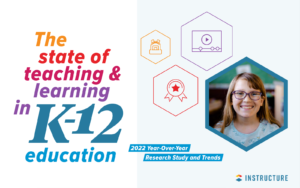6 Ways to Boost Your Professional Learning

Social media, professional learning communities, and collaborative authoring environments have expanded learning opportunities. Developing productive personal learning habits can accelerate your career and extend your impact. Following are six tips that might just change your life.
Log questions, blog answers. When someone asks you a tough question and you don’t feel like you have an adequate answer, write it down. Turn it into a writing prompt and open a Google Doc. As you work through your own thinking on the subject you’ll find the serendipity of online life delivers answers. Keeping good questions in front of you focuses your awareness and learning.
A couple of recent examples include:
- A couple meetings with impact game developers led to 26 Impulses That Sustain Engagement.
- A lively chat with the Bloomboard staff led to a discussion of Education as a Public Good.
Make connections, test implications. If you have an active learning life, you’re reading and listening to great content all day. When you read something that causes you to think different, open a doc and create a prompt, share it on social media and invite your friends to comment.
Recent examples include:
- 25 Tips and Strategies from a Carnegie Foundation report on student motivation
- A story on the context-driven future of the web offered some obvious parallels to personalized learning.
- An NPR story about materials science offered some great connections to our GenDIY series about young adults caring their own course to a career they love.
- A couple stories about blogging and content marketing resulted in our observations for educators.
Build a learning project. Pick a couple topics to learn about every year. Build a table of contents for big questions and open a doc for each. Add it to your learning plan (yes, like students, professionals should have a personal learning plan).
Some topics we took on over the last year include
- Reviewing all leading K-12 Learning platforms.
- We explored all the ways teachers use Big History Project.
- We dug into coding and career readiness.
Build a learning campaign. Pick a big learning project–a world changing topic– and invite colleagues to join you in mounting a campaign to illuminate the path forward.
Three years ago, the Smart Cities blog series was initiated as a personal learning project to catalog innovations in learning in America’s great cities. After three dozen blogs we developed early observations which teed up writing prompts for more than 60 experts. The personal learning project turned into a crowdsourced campaign. A year later Smart Cities That Work for Everyone was published.
We used the same formula to write Smart Parents: Parenting for Powerful Learning. Using Nellie Mae’s student-centered learning framework, over 100 blogs on from 70 contributors informed our parenting journey.
Following the hunch that educator development could be guided by micro-credentialing, we invited EdLeaders to contribute to Preparing Leaders for Deeper Learning.
Share what others are learning. When we take an interest in what others are learning — and share it — we catalyze both their growth and our own. When you meet someone new, ask questions that get at the heart of what they love to learn, what they love to do, and what some of their coolest experiences are.
A recent example is a dinner story retold: Drop Everything and Sail the World. Meeting with an analytics expert inspired a post on Helping Teachers and Schools Run Experiments. A call with an assistant superintendent was summarized Elected Board Urges Innovation in Denver.
Find something beautiful everyday. Take a picture and post it on Instagram (while you’re at it, follow us on Instagram — @getting_smart). Add the good ones to Pinterest or share them on Facebook. You’ll find that a little positive pressure to find some beauty in everyday life make you lift your chin and look around more often.
For more, check out:








0 Comments
Leave a Comment
Your email address will not be published. All fields are required.